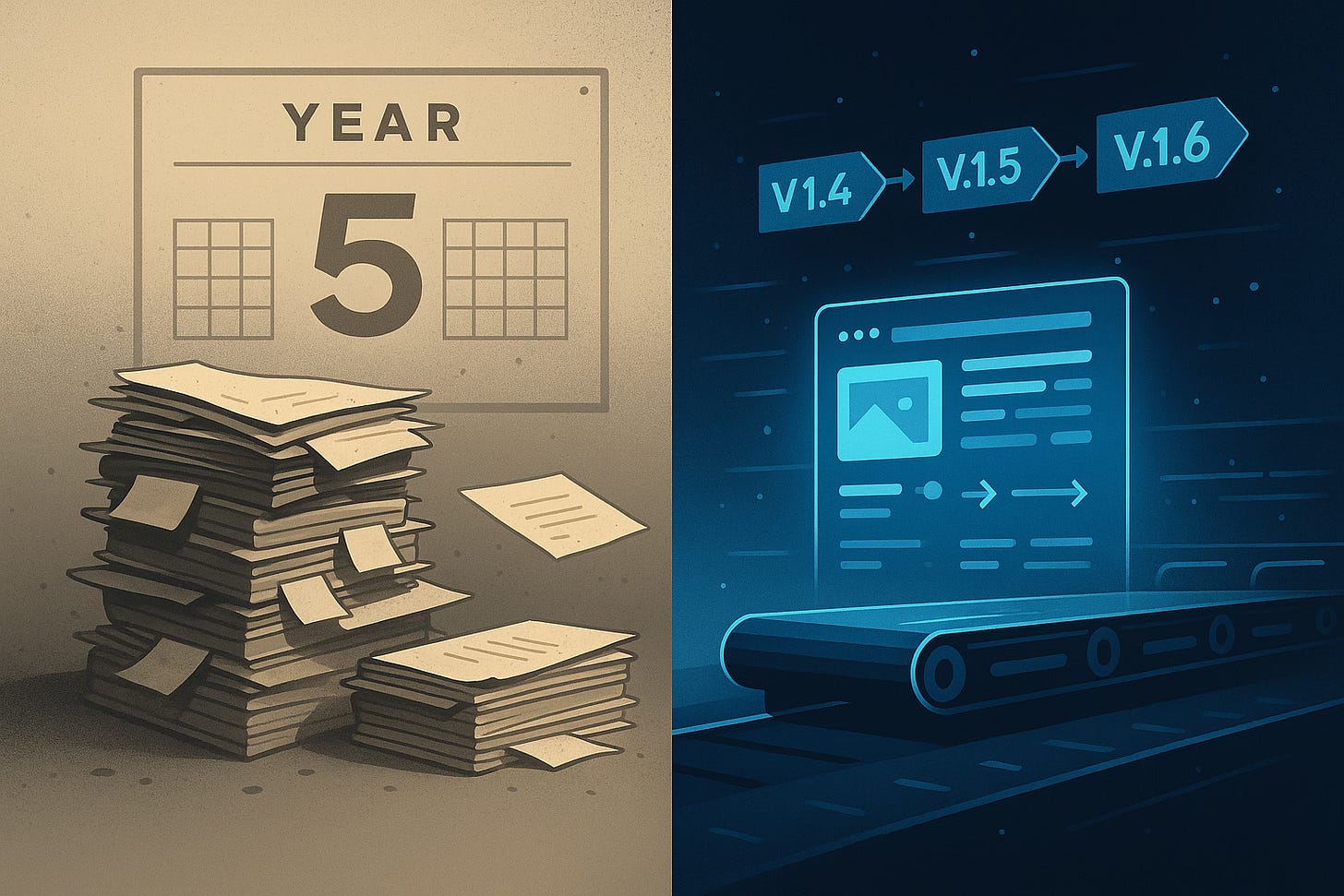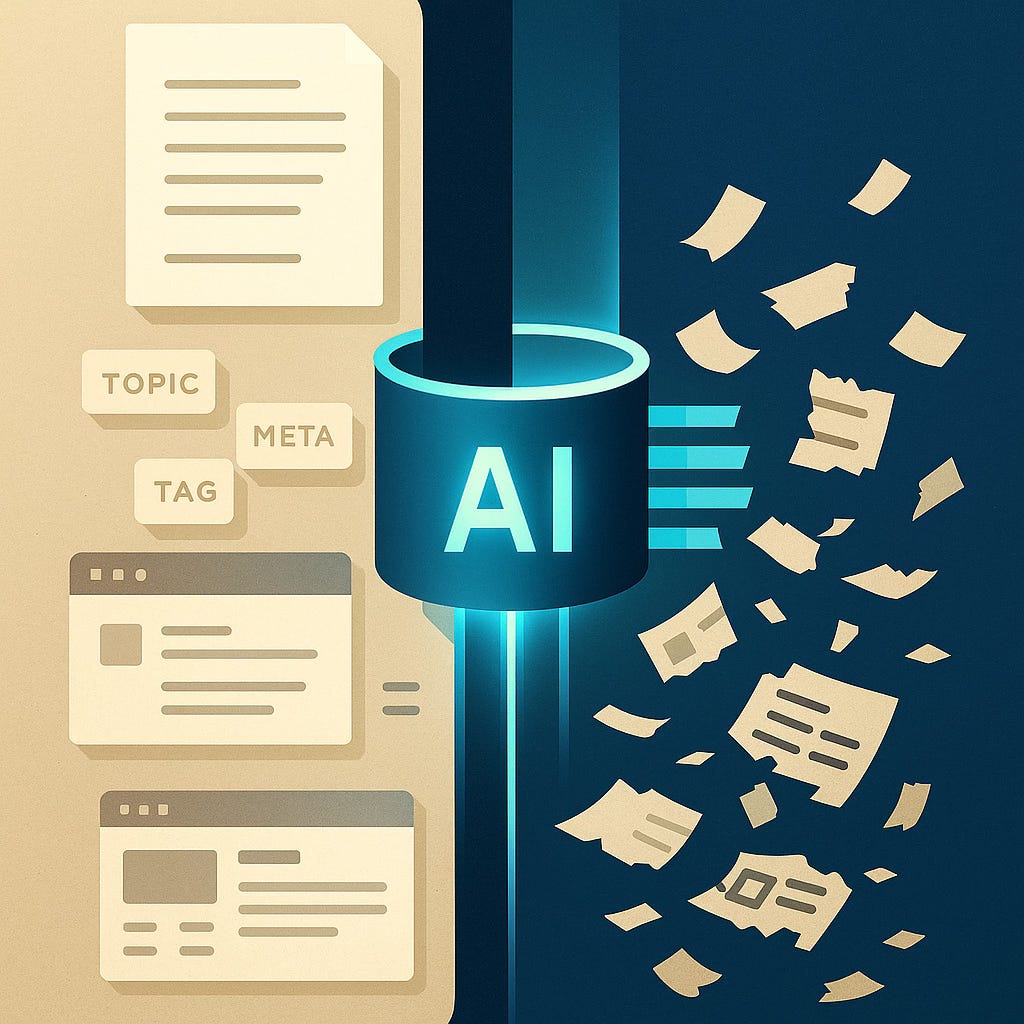Future-Proofing Technical Content in the Age of the “Knowledge Collapse”
Michael Iantosca on the uncomfortable reality that AI depends on content that changes faster than most organizations can keep up with
Technical writers have heard plenty of warnings about AI over the last few years, but few have hit as hard — or as accurately — as the one delivered by Michael Iantosca in his recent conversation with Scriptorium Publishing’s Sarah O’Keefe.
Iantosca, Senior Director of Content Platforms and Content Engineering at Avalara, has been working at the intersection of content and AI for decades. His recent article, “The coming collapse of corporate knowledge: How AI is eating its own brain,” sets the tone for what he and O’Keefe explore in this interview: the uncomfortable reality that AI depends on content that changes faster than most organizations can keep up with.
For technical writers, this conversation is not just timely — it’s a roadmap for what comes next.
AI Is Not the Enemy. Stale Content Is.
Iantosca isn’t anti-AI. Far from it. He’s one of the people building the next generation of content-aware automation and agentic workflows.
His concern is simple: AI systems consume corporate knowledge at enormous scale, but most of that knowledge is outdated the moment it’s written.
And yet organizations keep treating content like a “snapshot in time.”
Technical writers know better.
Software changes weekly — even daily. UI labels shift. Features evolve. Happy paths multiply into alternate paths and edge cases. Documentation debt piles up.
Meanwhile, large language models and vector databases continue to ingest old, conflicting versions of the truth.
The result? A growing gap between what we documented and what’s real today — a gap that AI only widens if organizations don’t rethink their content operations.
The Real Threat: Development Cycles Are Too Fast for Traditional Documentation
When Iantosca started his career, product cycles ran five years. Today they run 30 to 60 days. Technical writers are already struggling to keep pace. AI-generated first drafts can help, but they also introduce new risks:
They produce plausible-sounding but incorrect content.
They miss context and rationale — the “why” behind a feature.
They mix designs, specs, engineering notes, and reality into a probabilistic blend.
They fail to represent edge cases or the messy truth of how products actually work.
Writers have always been the last line of defense between product design and product reality. That role becomes even more critical — and more complex — when automation enters the process.
Why Current AI Workflows Break Down
Most organizations building chatbots or AI assistants made the same mistake: they scraped whatever content they could find — Confluence pages, PDFs, SharePoint sites — and stuffed it into vector databases.
In doing so, they:
Shredded structured topics into fragments
Discarded metadata
Ignored taxonomies and relationships
Lost versioning and lifecycle information
Mixed content that should have been retired
Now, when a bug is fixed or a UI changes, the AI doesn’t know how to “unlearn” the outdated pieces it was fed. Writers struggle with this in human-readable content. LLMs struggle even more.
This is how “knowledge collapse” happens — not because AI fails, but because its inputs have no governance.
Keep reading with a 7-day free trial
Subscribe to The Content Wrangler to keep reading this post and get 7 days of free access to the full post archives.




